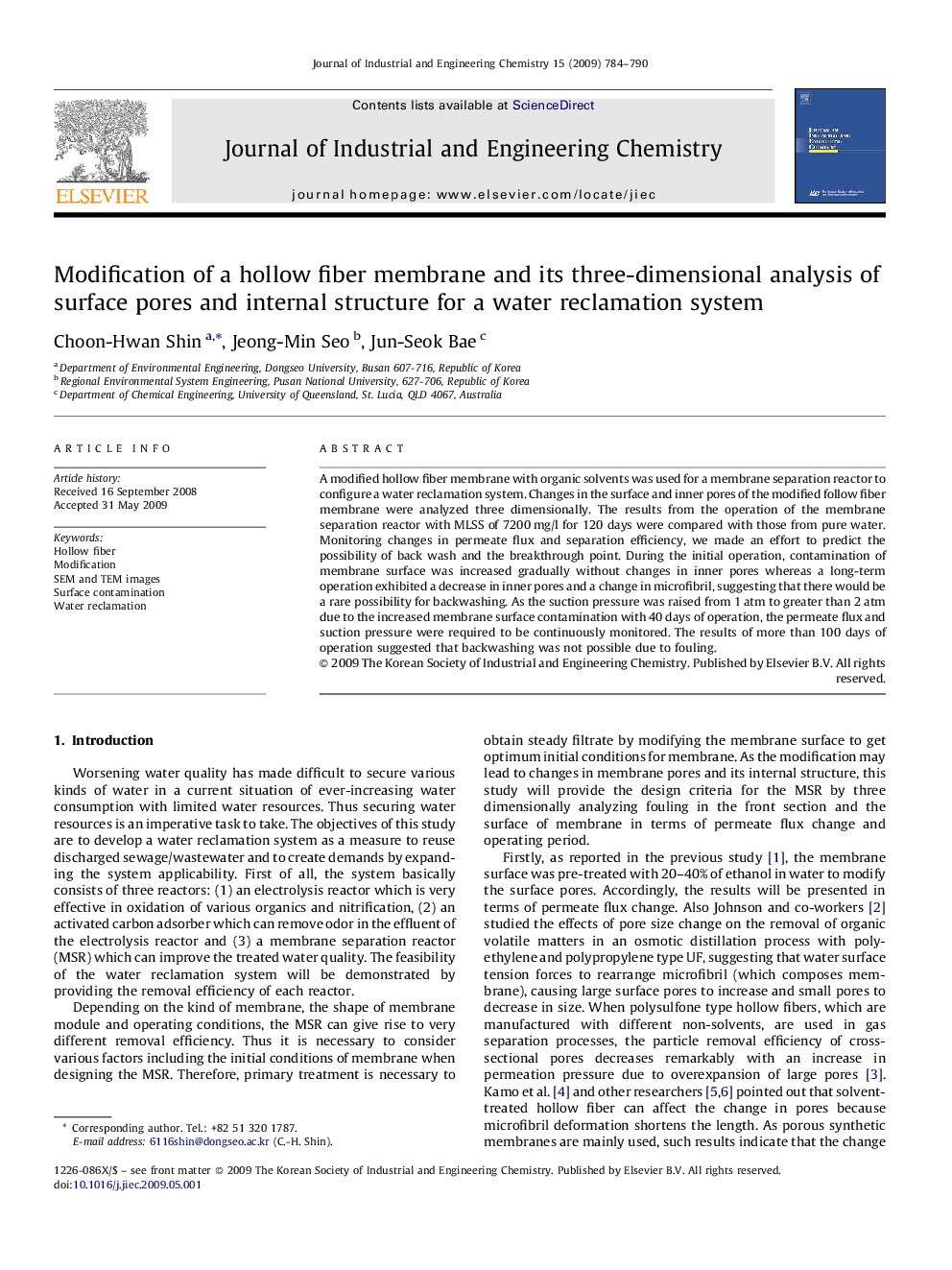| Article ID | Journal | Published Year | Pages | File Type |
|---|---|---|---|---|
| 229277 | Journal of Industrial and Engineering Chemistry | 2009 | 7 Pages |
Abstract
A modified hollow fiber membrane with organic solvents was used for a membrane separation reactor to configure a water reclamation system. Changes in the surface and inner pores of the modified follow fiber membrane were analyzed three dimensionally. The results from the operation of the membrane separation reactor with MLSS of 7200Â mg/l for 120 days were compared with those from pure water. Monitoring changes in permeate flux and separation efficiency, we made an effort to predict the possibility of back wash and the breakthrough point. During the initial operation, contamination of membrane surface was increased gradually without changes in inner pores whereas a long-term operation exhibited a decrease in inner pores and a change in microfibril, suggesting that there would be a rare possibility for backwashing. As the suction pressure was raised from 1Â atm to greater than 2Â atm due to the increased membrane surface contamination with 40 days of operation, the permeate flux and suction pressure were required to be continuously monitored. The results of more than 100 days of operation suggested that backwashing was not possible due to fouling.
Related Topics
Physical Sciences and Engineering
Chemical Engineering
Chemical Engineering (General)
Authors
Choon-Hwan Shin, Jeong-Min Seo, Jun-Seok Bae,
